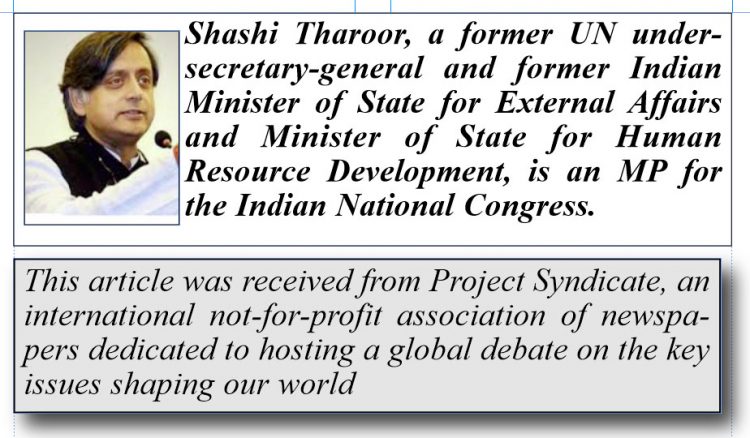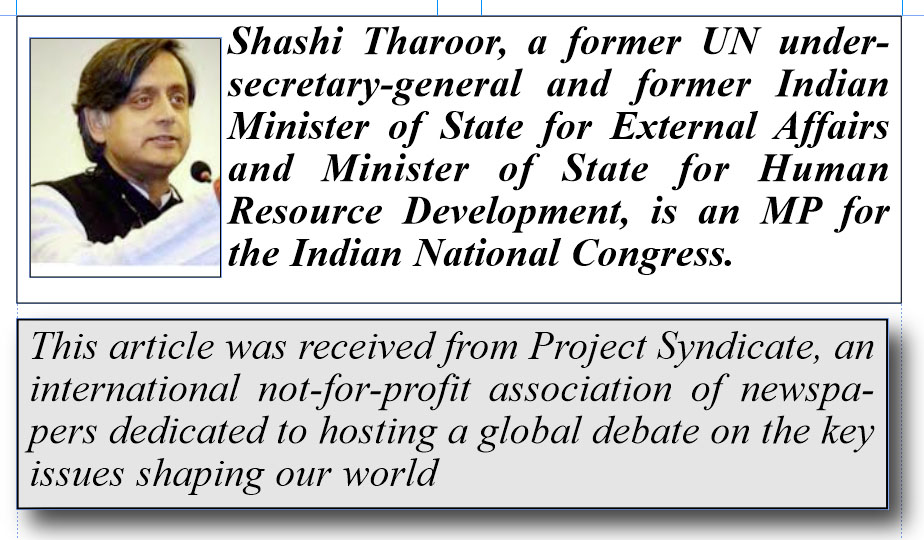 NEW DELHI – Until recently, Indians had gotten used to taking economic growth for granted. After a decade of annual growth averaging over 9%, India’s economy weathered the post-2008 worldwide recession and grew at a still impressive rate of 7% until 2014-15. Nothing, it seemed, could stop the gravy train from rolling on.
NEW DELHI – Until recently, Indians had gotten used to taking economic growth for granted. After a decade of annual growth averaging over 9%, India’s economy weathered the post-2008 worldwide recession and grew at a still impressive rate of 7% until 2014-15. Nothing, it seemed, could stop the gravy train from rolling on.
And then came Prime Minister Narendra Modi’s government and his biggest economic blunder, demonetization, which took 86% of India’s currency abruptly out of circulation (in an effort, Modi claimed, to flush out undeclared wealth). The economy is yet to recover. Millions of jobs were lost and hundreds of thousands of small and micro enterprises – employing 2-7 workers and dependent on daily cash flow to sustain themselves – went under. All that was achieved was that Modi, who prizes appearances above actual results, managed to look bold and decisive.
If demonetization was a bad idea badly implemented, next came a good idea badly implemented: a nationwide Goods and Services Tax (GST). Instead of a simple, flat and all-inclusive GST – as applied in every country where the concept has worked well – the government unveiled a multi-tier GST. Despite having five different rates and a luxury tax on top, the government’s hasty and botched rollout retained a number of key exclusions (including alcohol and petrol) and continues to confuse all who are subject to it. These two initiatives derailed economic growth, which is now expected to slow to 5% this fiscal year.
Bad news is everywhere: unemployment is at a 45-year high of 8.4% and rising; the distressed agriculture sector was driving record numbers of farmers to suicide (which is why the government now suppresses the figures); and manufacturing, exports, and the index of industrial production are all down. Output in India’s eight core industrial sectors – coal, crude oil, natural gas, refined petroleum products, fertilizer, steel, cement, and electricity – declined 0.5% in August.
Meanwhile, India’s banks are reeling under a huge burden of non-performing assets (NPAs), with debts exceeding $150 billion and one financial institution after another coming under the scrutiny of regulators and law-enforcement authorities. Loans have dried up, owing to banks’ leeriness of piling up more NPAs; investment has slowed to a trickle as a result. With sinking demand for new housing causing a slump in the residential property market, many builders are struggling to repay their loans to banks, worsening the crisis. With consumers lacking resources, banks unwilling to lend, and investors afraid to borrow, it is unclear where the much-needed fillip to economic growth will come from.
Car sales have collapsed, plummeting 32% in August, the largest annual drop in two decades. The decline continued for an eleventh straight month in September, when sales fell 23.7%, and persisted in October, when three back-to-back Hindu festivals normally loosen consumers’ purse strings. A major wave of layoffs by carmakers has followed, with Ford announcing factory closures and an estimated one million jobs in jeopardy.
As with other economic setbacks, policy decisions by India’s central and state governments are principally responsible for this outcome. Higher car prices reflect not only luxury taxes on higher-end models and the effects of higher safety and emissions standards, but also hikes in sales taxes on cars in nine states. And the large volume of NPAs means the banks and finance companies that dealers rely on to provide car loans to many purchasers are pulling back. The automobile sector is proof of the extent to which India’s economic downturn is the result of policy ineptitude.
The signs of the downturn are everywhere, affecting ordinary Indians’ daily lives. Indians are fond of cookies (which we call “biscuits”) with our omnipresent cups of tea, but even biscuit sales are down 8%, prompting the popular biscuit manufacturer Parle to announce thousands of layoffs. And the famous “underwear index” proposed by Alan Greenspan, the former US Federal Reserve chairman, confirms the extent of India’s slump. Greenspan posited that declining sales of men’s underwear was an accurate indication of consumer distress. According to some reports, men’s underwear sales are down 50% in Tirupur, the capital of the garment industry in the southern state of Tamil Nadu.
The recent increase in oil prices has compounded India’s problems in the short term. Advances in robotization and artificial intelligence represent a longer-term drag on growth, because they have reduced many Western countries’ dependence on outsourced Indian skills in such areas as code-writing, medical transcription, and business-process offshore call-centers. And with the Indian rupee plumbing record lows against the US dollar, essential imports have become more expensive.
It hasn’t helped that in the midst of all this, US President Donald Trump has made India a target of his increasingly acrimonious approach to trading partners. The bonhomie Trump and Modi recently displayed in Houston did not translate into a resolution of the issues the United States has been griping about.
Through it all, the government has appeared clueless. Its proposed budget has prompted despair in the business community, with an unexpected tax increase on foreign investors leading many of them to sell their Indian holdings and leave. Then – as its negative impact became increasingly evident – the government announced a series of U-turns on tax increases and business incentives.
After Modi was overwhelmingly re-elected in May with an even larger majority for his party, many economists expected him to take bold steps to remove the many bottlenecks that have discouraged investors, both Indian and foreign. There have been none, and no short-term stimulus, either. Longstanding issues such as agricultural stagnation, rigid labour laws, and prohibitive land costs are simply absent from the government’s agenda.
With the economic downturn leaving revenues well short of projections, pressure on India’s tax officials to catch evaders has mounted, prompting intrusive investigations that have been decried as “tax terrorism.” Many Indian millionaires are voting with their feet; 5,000 migrated last year, and the number this year is likely to be much higher.
The conclusion is inescapable: the Great Indian Growth Story is on hold. And no one should expect the Modi government get the gravy train back on track.
Copyright: Project Syndicate, 2019.





